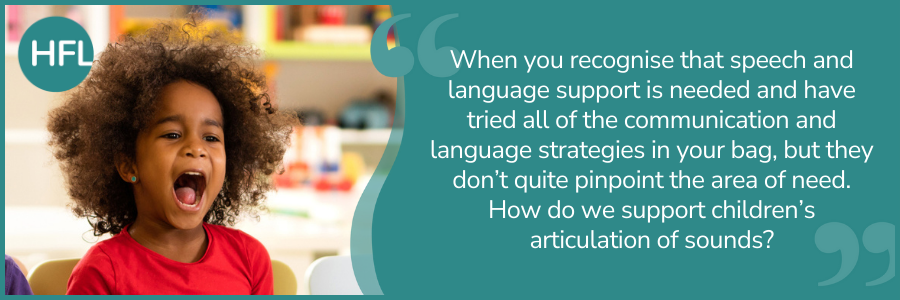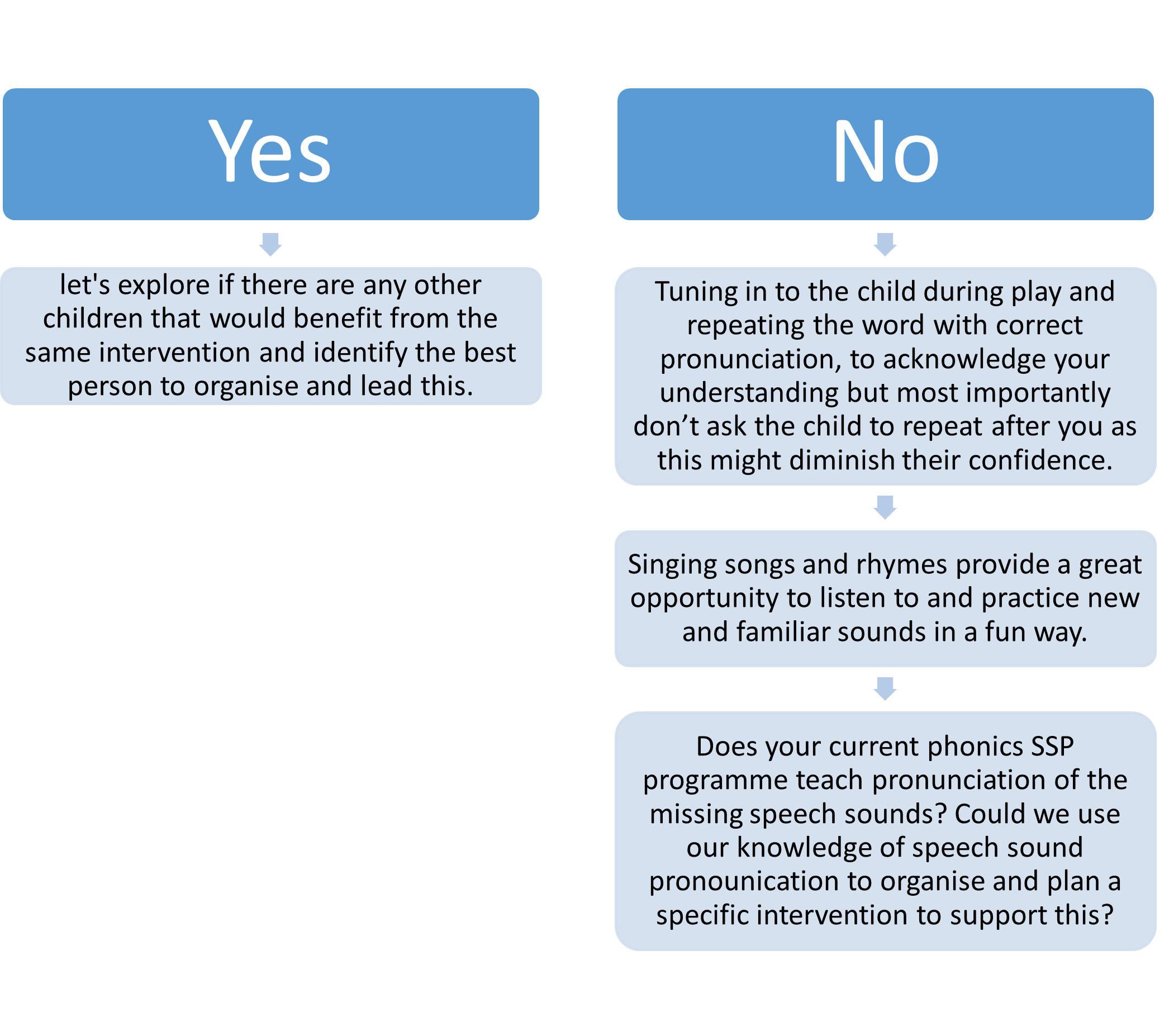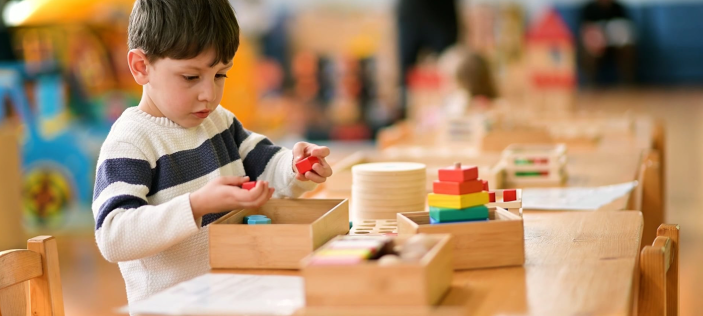
In many of my recent visits, I have worked with practitioners to discuss the development of communication and language: the need to improve serve and return interactions, the importance of developing opportunities for children to talk and to be heard and the growing need for speech and language therapist support. Leading the Terrific Talkers School Project for two years now, I find that many of my conversations look towards the development of language, however, there are times when these ‘developmental practice procedures’ are not specific enough in accelerating progress for children where speech is impacted.
For this blog, I will use definitions from the Oxford Dictionary:
Speech: Speech is the expression of ideas and thoughts by means of articulate vocal sounds, or the faculty of thus expressing ideas and thoughts.
Language: the principal method of human communication, consisting of words used in a structured and conventional way and conveyed by speech, writing, or gesture.
In a recent progress and attainment discussion with a group of teachers, we identified less than expected progress for a child experiencing communication and language as a barrier to learning. Practitioner knowledge, built on observation and interactions, indicated that pronunciation of some speech sounds, specifically ‘s’ was impacting the child in communicating his knowledge. The child’s key person explained that in a familiar context with specific resources the child could be understood and their understanding of serve and return interactions secure, however, when observed later that day, in the outdoor area immersed in the awe and wonder of his imagination the language used by the child was much harder to understand. Referrals to SALT services have been made and the child is one of many on a waiting list to be seen- but what can we do in the meantime? How can we best support the child to make progress?
Doing something is always better than doing nothing
Considering what we do in the meantime depends on the child’s identified needs.
There are so many complex folds to the development of communication and language, including:

Exploring which aspect is presenting a barrier is the key to identifying your next steps.
- Have you considered using Speech and Language UK's Progress checker?
This can help you identify whether there is a speech concern and best practice would suggest completing this with the child’s parents/carers to get a holistic understanding of the child’s speech development. Completion of this tool can then be used to support the identification of specific barriers.
- You might also use the Oxford NHS speech sound development chart for further guidance. Completion of this tool can then be used to support identification of specific barriers.
So, I have this knowledge now what?
Do you have any communication and language programmes running in your school or setting and if so, are they targeted to meet the identified need, in this case, to support pronunciation of the speech sound s?

If you have experience in speech and language therapy, you might quickly recognise lots of opportunities provided for repetitive practice and games. Here are a few you might like to try in your provision. Identify which sounds the child requires support with and collect a bank of objects and pictures to play these games:
- Sound spotter game -Using a few objects/images beginning with different initial sounds. Say a range of sounds and ask children to identify and say the word beginning with the identified sound (s is for sock)
- Hidden sounds- use a feely bag with a few objects beginning with an identified sound. Ask the child to choose an object from the bag for the adult to say, progressing to the child saying the chosen objects
Sock sounds – place a selection of pictures/objects on the floor. Using a rolled-up sock/beanbag ask the child to throw the sock at one of the objects and say the word
Accessible websites for further guidance:
- The Oxford NHS speech sound development chart provides further guidance to support practitioners working with children.
- Speech and language kids to provide advice on the correct teeth and mouth placement to support the production of speech sounds: One example from this website is: “For the S sound, have the child put his tongue in the same place as /t/ (use the placement cues from /t/) but then blow air out. We call this the snake sound! The child should blow air over the top of the tongue. The sides of the tongue should be pushed against the upper back teeth.”
For more information about the Terrific Talkers project or support for developing a communication friendly environment please get in touch.



